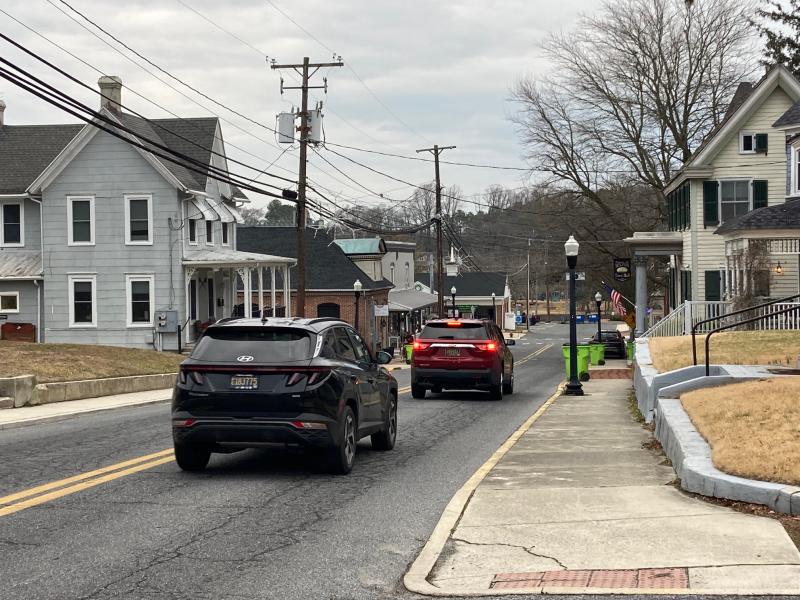Milton council tables one-way streets study
Milton Town Council tabled its pursuit of a feasibility study that would look into converting four of the town’s main streets to one-way traffic.
The idea came from the traffic-calming ad hoc committee report of August 2022, which recommended, as a long-term goal, a feasibility study of alternate traffic patterns and potential one-way streets on the four major roadways in town – Chestnut, Federal, Union and Mulberry streets – with the possibility of converting one of the lanes into a bike lane. This study would also look into the possibility of undergrounding utilities and examining ways to add to the town’s parking capacity.
Because the project involves new bike lanes, the town was given a $10,000 Delaware Cycling Innovation Grant by the Delaware Department of Transportation for the study. The town was planning to use that money to fund the feasibility study. However, the catch was that engineering estimates put the cost at an additional $120,000. That left two alternatives: either seek additional grant money or amend the town budget to use reserve funds. Council elected to have Town Manager Kristy Rogers explore other grant opportunities to fund the study.
At council’s Feb. 6 meeting, Rogers said the study could be pared down to remove sections about undergrounding utilities and expanding parking, and to split it into two tasks, with one task looking at Union and Mulberry streets, and the other at Chestnut and Federal streets. This would get the town’s cost of the study down to $45,000 for both tasks; although, Rogers said it was unclear if the $10,000 grant would apply.
The idea of converting the town’s four major streets to one-way traffic met with resistance at council’s meeting right from the get-go.
Resident Betty McGrath said she opposed not just the cost of the feasibility study, but the potential cost of implementing it. She said turning the main streets into one-way streets would cause inconvenience for residents and confusion for visitors.
“In my opinion, this doesn’t make sense,” she said.
Milton Fire Department President Brian Reynolds, in opposition to the proposal, said changing the traffic patterns in town would inhibit firefighters’ ability to get to the station on Front Street and the department’s ability to respond to calls.
“This will place your citizens, the citizens of the outlying community and visitors to our community in grave danger as you hinder our ability to respond to emergency calls for service,” Reynolds said.
Resident Theresa Brittingham said, “Does this matter? I’ve tried to wrap my head around changing the way an entire town operates with one-way streets and bike trails. I can’t find a good reason. We’re safe. We’re good. Two-way streets. Bikes are doing fine. Study is complete.”
Councilwoman Randi Meredith, who chaired the ad hoc committee, said the study is aimed at preparing Milton for future growth, specifically projects like the Granary at Draper Farm development, which is anticipated to double the town’s size once its 20-year buildout is complete. She said she is looking to plan for the future, not the past.
Mayor John Collier said while he thinks the proposal has some merits, he did not care for the price tag or for the fact that it could potentially blow up in the town’s face. Collier said because the plan has been altered and there is a question of whether the existing $10,000 grant applies, he wanted to table the discussion until that question is answered.
Meredith then asked each council member what dollar amount they would be willing to spend on a feasibility study. Council members Fred Harvey and Larry Savage said they would not spend anything and did not support a study. Councilwoman Lee Revis-Plank said she would like to table the study and reexamine it when council begins discussions of the fiscal year 2024 budget in July, a sentiment Councilman Rich Baty agreed with. Collier said while he wants to plan for the future, this particular measure requires a higher level of study.
Ryan Mavity covers Milton and the court system. He is married to Rachel Swick Mavity and has two kids, Alex and Jane. Ryan started with the Cape Gazette all the way back in February 2007, previously covering the City of Rehoboth Beach. A native of Easton, Md. and graduate of Towson University, Ryan enjoys watching the Baltimore Ravens, Washington Capitals and Baltimore Orioles in his spare time.
















































